Unlocking Insights with an AI Report Writer
Discover how an AI report writer can transform raw data into actionable reports. Learn how to choose the best tool and unlock new levels of business efficiency.
Imagine having a whole team of expert analysts and writers on call, 24/7. That's essentially what an AI report writer brings to the table. It’s a smart tool that takes raw, complicated data and automatically turns it into clear, insightful reports that are easy to understand. It’s like a master translator, converting the language of numbers into plain English, saving you countless hours of tedious work. Platforms like Zemith are designed to deliver this power directly to your team, transforming your reporting process from a chore into a strategic advantage.
What Exactly Is an AI Report Writer?

At its heart, an AI report writer is a sophisticated piece of software built to automate the entire reporting cycle, from gathering data to writing the final narrative. Instead of you having to manually dig through endless spreadsheets and databases, this technology hooks directly into your data sources. From there, it uses powerful algorithms to spot key trends, patterns, and outliers that a human eye might easily overlook.
But it goes way beyond just creating pretty charts. The real magic is its ability to weave those findings into a coherent story. It doesn’t just show you a graph; it explains the "why" behind the data, detailing what happened, why it's important, and what could happen next. To get a better sense of these outputs, it can be helpful to understand what data products are in automated reporting.
The Core Process Unpacked
So, how does it all work? The system follows a series of automated steps that mirror what a human analyst would do. It’s designed to be straightforward, so you don't need a Ph.D. in data science to generate valuable reports.
The process generally breaks down like this:
- Data Ingestion: First, the tool automatically pulls information from all your different sources, whether that's a database, an analytics platform, or a simple spreadsheet.
- Pattern Analysis: Next, it uses machine learning to sift through the data and find significant trends, unusual spikes or dips, and hidden connections.
- Insight Generation: It then translates these raw patterns into meaningful business takeaways.
- Narrative Creation: Finally, it writes up a clear, well-structured report using a technology known as Natural Language Generation. You can learn more about the tech in our article on natural language processing applications.
This kind of automation isn't just a niche trend anymore. A staggering 82% of businesses are now using AI tools for creating content. This massive shift shows that tools like Zemith aren't just about speeding things up; they’re about unlocking deeper strategic insights that were previously out of reach.
Essential Features Of A Powerful AI Report Writer
So, what separates a genuinely useful AI report writer from a glorified data-dumping tool? It really comes down to a few core capabilities that work together to turn raw numbers into a clear, strategic story. Think of a great AI report writer less as a tool and more as an analyst on your team.
The absolute starting point is data integration. If the tool can't easily connect to all your data sources—your CRM, analytics platforms, spreadsheets, databases—then you're starting with an incomplete picture. The goal is to break down data silos, not create new ones. A platform like Zemith, for instance, offers seamless integrations to pull your sales figures from Salesforce and your marketing metrics from Google Analytics to build one cohesive performance report.
This simple workflow shows how raw data gets transformed into a polished, insightful report.
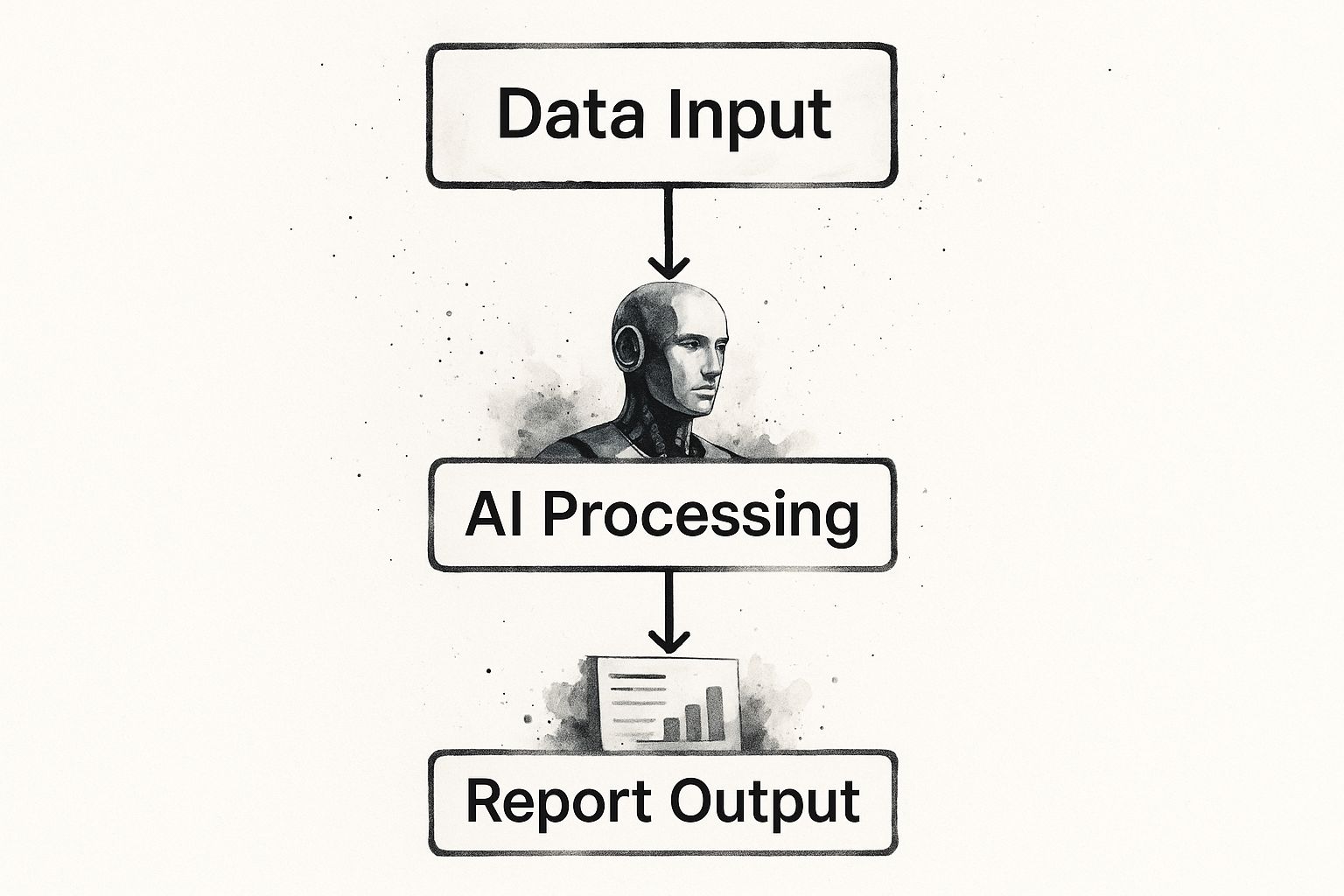
As you can see, the quality of what comes out is directly tied to what you put in and how intelligently the AI can process it.
Core Capabilities For Modern Reporting
Once your data is connected, the magic is in the output. This is where Natural Language Generation (NLG) plays the starring role. A top-notch tool doesn't just spit out robotic summaries; it writes clear, context-aware narratives that sound like a human wrote them. You get a report that tells a story, making complicated data easy for anyone in the company to understand.
Flexibility is another non-negotiable. Your reports need to fit your brand and answer your specific questions. This means customization is key. You should be able to:
- Tailor templates to keep everything looking consistent and on-brand.
- Create dynamic charts and graphs that automatically update as new data comes in.
- Adjust the narrative tone, shifting from formal and analytical to something more conversational, depending on the audience.
An effective AI report writer doesn’t just present data; it interprets it within your business context, offering a narrative that is both insightful and immediately actionable.
To help you evaluate your options, here's a quick checklist of the must-have features you should be looking for in any modern AI reporting tool.
Essential AI Report Writer Features Checklist
| Feature | Why It's Critical | Zemith Advantage |
|---|---|---|
| Seamless Data Integration | Connects to all your data sources (CRM, DBs, spreadsheets) for a complete, unified view. Prevents fragmented analysis. | Zemith offers a wide range of native connectors, ensuring all your data works together from a single source of truth. |
| Natural Language Generation | Translates complex data into clear, human-sounding narratives, making insights accessible to non-technical stakeholders. | Our advanced NLG produces context-aware, insightful commentary that reads like an expert analyst wrote it. |
| Customizable Templates | Ensures brand consistency and allows you to structure reports precisely to your business needs, saving time on formatting. | Create and save unlimited templates that reflect your brand identity, complete with logos, colors, and layouts. |
| Dynamic Visualizations | Generates real-time charts and graphs that make trends and patterns easy to spot at a glance. | Zemith automatically suggests the best chart types for your data and keeps them updated as information changes. |
| Adjustable Tone of Voice | Lets you tailor the report's language for different audiences, from executive summaries to in-depth technical reviews. | Switch between formal, analytical, and conversational tones with a single click to match your report's purpose. |
This checklist covers the foundational elements that make a real difference.
These features ensure the final report is a true decision-making asset, not just another document. For businesses that handle a lot of unstructured information, understanding the mechanics of intelligent document processing software can shed more light on how AI makes sense of it all. At its core, a platform like Zemith is built with these capabilities in mind, giving you a complete and powerful analytical engine.
What Automated Reporting Really Does for Your Business

Sure, the features of an AI report writer sound great, but what's the real-world payoff? It boils down to one simple, powerful shift: turning countless hours of manual data wrangling into mere minutes of automated work. This frees your people up to do what they do best—thinking strategically and getting things done.
Moving your team from data entry to data analysis is where you’ll find a genuine competitive edge.
Think about a marketing manager who used to lose the first week of every month to a mountain of spreadsheets, pulling numbers from a dozen different tools. With a platform like Zemith, those detailed performance reports show up automatically. That recovered time is now spent fine-tuning campaigns, running new tests, and dreaming up the next big idea—activities that directly drive a higher return.
Driving Growth Through Better Data
Manual reporting isn't just slow; it's prone to mistakes. Automation brings a level of accuracy that a human pulling data at 2 a.m. just can't guarantee. By cutting out the risk of human error in your data collection, you build a foundation of reliable information for every big decision.
This is where things get really interesting. An AI report writer doesn’t just spit out numbers; it helps you find the story within the numbers. It flags trends, points out correlations, and highlights anomalies that you might have missed entirely. It’s no surprise that 58% of companies are now using generative AI, reporting a 66% boost in productivity and seeing 28% higher engagement.
An AI report writer transforms raw data from a chore into a strategic asset. It’s a tool for making smarter decisions, accelerating growth, and staying ahead of the competition.
When you combine the time saved with the improved accuracy and deeper insights, the business case becomes a no-brainer. To see what this looks like in practice, check out these financial dashboard examples to see how clean data leads to clear insights. Of course, presenting that data effectively is its own skill, which you can learn more about in our guide on data visualization best practices.
Where AI Reporting Makes a Real Difference
You really start to see what an AI report writer can do when you look at how it solves actual business problems. Its true strength lies in its flexibility. No matter the industry or department, it can adapt, turning messy, raw data into a genuine strategic asset. Whether you’re in marketing or running operations, the fundamental win is the same: you get to make smarter decisions, faster, because the insights are generated for you.
This isn't just a hypothetical a-ha moment; it's changing how teams get things done right now. A marketing team, for example, can completely automate the chore of building SEO performance reports. Instead of spending days trying to merge data from a half-dozen different analytics platforms, they get a clean, ready-to-share story. A tool like Zemith highlights what’s working with keywords, where traffic is coming from, and the real ROI on their campaigns, letting them tweak their strategy on the fly.
From Finance to Operations
But this goes way beyond just marketing. Think about a finance department. They can use an AI report writer to create perfect quarterly summaries in just a few minutes—a task that used to take weeks of painstaking work. The system can plug right into their accounting software, sift through financial statements, and produce a clear narrative explaining how performance stacks up against forecasts. It even points out major expense drivers and flags anything that looks a bit off for a human to double-check.
The magic of an AI reporting tool is that it handles the monotonous, data-heavy lifting that bogs everyone down. This frees up talented people to do what they do best: think strategically and take action, instead of just compiling data.
An operations manager can get a similar boost. Imagine keeping tabs on the entire supply chain with live dashboards and automated daily briefings. By linking an AI writer to inventory and logistics systems, they can get reports that instantly identify bottlenecks, predict demand with surprising accuracy, and uncover new ways to cut costs.
Each of these examples shows how a platform like Zemith is more than just a simple automation tool. It zeroes in on a specific, frustrating problem—the bottleneck of manual reporting—and solves it with smart AI. The results are easy to measure: hours saved, fewer errors, and insights that actually mean something. It helps teams finally stop chasing data and start using it to grow the business.
Choosing the Right AI Report Writer for Your Team
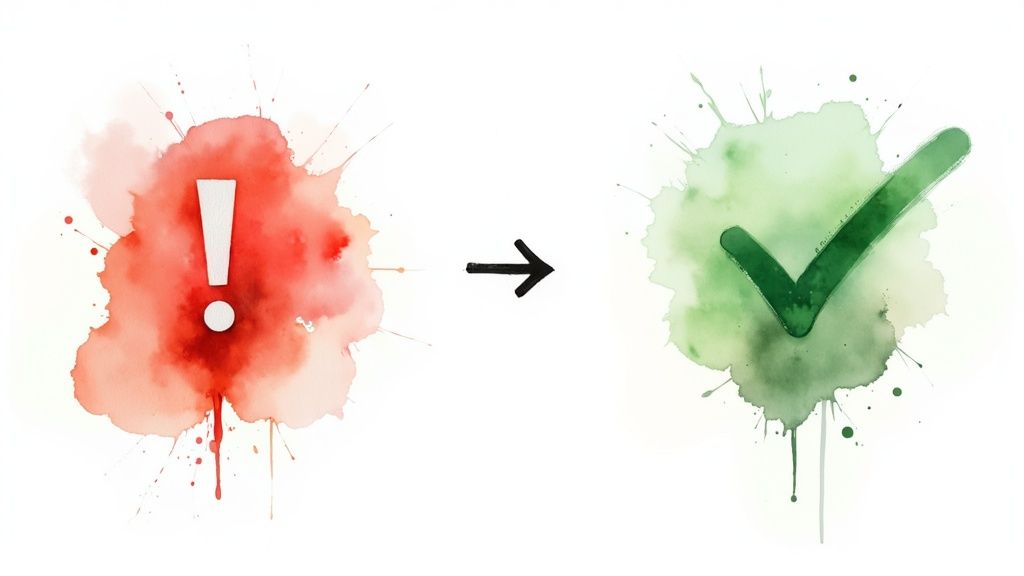
Picking the right AI report writer isn't just about ticking off a long list of features. It’s about finding the tool that actually solves your team’s real-world problems. What works brilliantly for one company could be a clunky, expensive mistake for another.
So, where do you start? The first step is to get brutally honest about what you actually need.
Take a moment to map out your biggest reporting headaches. Are you spending half your day just trying to pull data from a dozen different platforms? Is keeping your reports on-brand a constant struggle? Or is the sheer time suck of manual report building the real killer? Answering these questions gives you a practical checklist to measure each tool against. This clarity helps you zero in on a solution like Zemith, which is built to tackle those core issues head-on.
Key Questions to Ask During Your Evaluation
Once you know what you’re solving for, you can start looking at the options. The market is packed with choices. You have the big players like OpenAI holding 28% market share and others like Anthropic at 17%. But don't overlook the specialized tools that might be a perfect fit for your specific needs. It's a busy space, and it pays to look closely. You can discover more insights about the rise of AI writers in 2025 to get a feel for the landscape.
When you get a demo or a free trial, use your time wisely. Go beyond the sales pitch and ask questions that get to the heart of how it will work for your team.
- Ease of Use: If I hand this to someone on my team who isn't a tech wizard, how long will it take them to create a report? A steep learning curve is a deal-breaker.
- Integration Power: Can this thing actually connect to all our essential data sources without needing a developer? Think CRM, analytics, project management tools—the works.
- Customization Depth: How much can we tweak the final report? I’m talking about branding, layout, and even the narrative tone. Can it sound like us?
- Support and Onboarding: What happens after we sign up? Is there a real human to help us get started, or are we on our own with a library of help articles?
A truly effective AI report writer should feel like a natural extension of your team. It must be powerful enough to handle complex data yet simple enough for everyone to use confidently.
At the end of the day, the best tool is the one that empowers your team, not just spits out reports. Look for a platform that delivers real value quickly. That’s why a solution like Zemith often stands out—it balances a clean, simple interface with the serious analytical muscle you need to get the job done right.
Got Questions About AI Reporting Tools? We've Got Answers.
Jumping into new tech always brings up a few questions. Before you can trust an AI report writer, you need straight answers to the most common concerns. Let's dig into what's really on people's minds before they decide to bring AI into their workflow.
A big one we hear all the time is whether an AI can really understand the unique quirks of a specific business. Will it just churn out generic fluff, or can it actually figure out what metrics move the needle for your team?
Can an AI Report Writer Truly Get My Business Context?
Absolutely. A well-designed AI report writer is built to learn your specific business environment. It's not just about crunching numbers. Advanced platforms like Zemith go deeper, analyzing your data for industry-specific language, patterns that pop up again and again, and the specific key performance indicators you care about.
The AI essentially learns what's important to you, so it can produce narratives that speak directly to your goals. Think of it as the difference between a canned, off-the-shelf summary and a custom-built analysis that fits your operations like a glove.
Of course, another huge question is about privacy. Handing over sensitive business data is a big deal, and it requires a massive amount of trust.
Security isn’t just a feature; it’s the foundation. Reputable AI platforms treat your data with the same level of care you do, using enterprise-grade measures to ensure it remains confidential and protected at all times.
Leading tools put data security front and center. For instance, Zemith uses a multi-layered approach to keep your information locked down:
- End-to-End Encryption: Your data is scrambled and secured from the moment it leaves your system to the moment you see it in a report.
- Compliance Standards: The platform follows strict international data handling standards, so you know your information is being managed responsibly.
- Strict Confidentiality: Your business data is only used to generate your reports. It’s never shared or used for anything else. Period.
Okay, But Is This Stuff Hard to Use?
Not at all. The whole point of a modern AI report writer is to put powerful data analysis into the hands of everyone—not just the data scientists. You don't need a background in coding or statistics to get incredible value.
Tools like Zemith are designed around a simple, intuitive experience. You can connect data sources with a few clicks, start with pre-built templates, or customize reports using simple drag-and-drop tools. The AI does all the heavy lifting in the background, freeing up anyone on your team to create professional, data-backed reports in minutes. This focus on simplicity means you'll be up and running fast, seeing a return on your investment almost immediately.
Ready to see how an AI-powered workspace can change the way you build reports and find insights? Discover how Zemith brings your data analysis, content creation, and research together in one seamless platform. Start your free trial today.
Explore Zemith Features
Introducing Zemith
The best tools in one place, so you can quickly leverage the best tools for your needs.
All in One AI Platform
Go beyond AI Chat, with Search, Notes, Image Generation, and more.
Cost Savings
Access latest AI models and tools at a fraction of the cost.
Get Sh*t Done
Speed up your work with productivity, work and creative assistants.
Constant Updates
Receive constant updates with new features and improvements to enhance your experience.
Features
Selection of Leading AI Models
Access multiple advanced AI models in one place - featuring Gemini-2.5 Pro, Claude 4.5 Sonnet, GPT 5, and more to tackle any tasks
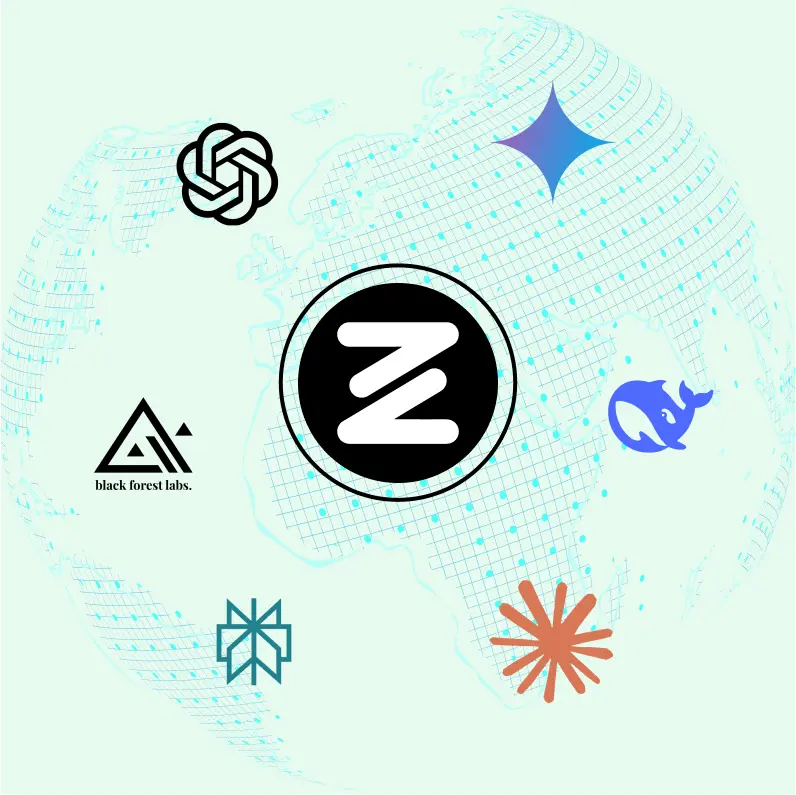
Speed run your documents
Upload documents to your Zemith library and transform them with AI-powered chat, podcast generation, summaries, and more
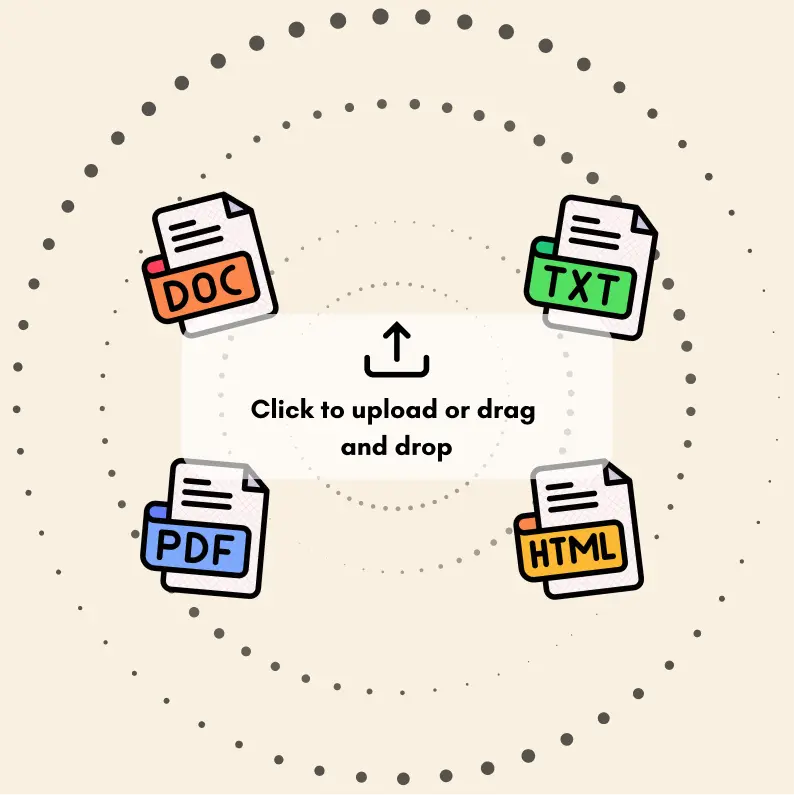
Transform Your Writing Process
Elevate your notes and documents with AI-powered assistance that helps you write faster, better, and with less effort
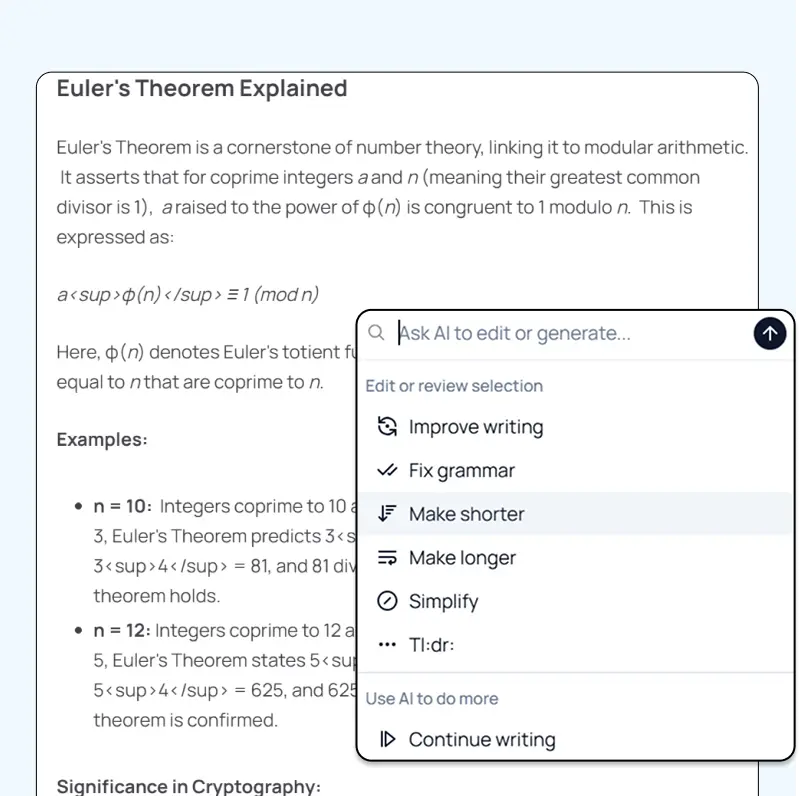
Unleash Your Visual Creativity
Transform ideas into stunning visuals with powerful AI image generation and editing tools that bring your creative vision to life
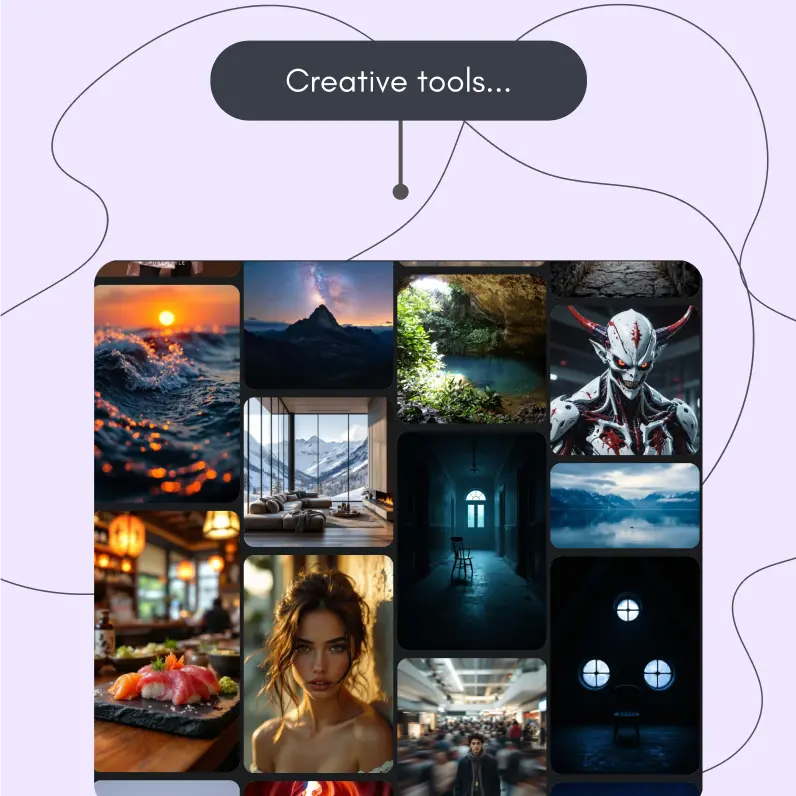
Accelerate Your Development Workflow
Boost productivity with an AI coding companion that helps you write, debug, and optimize code across multiple programming languages
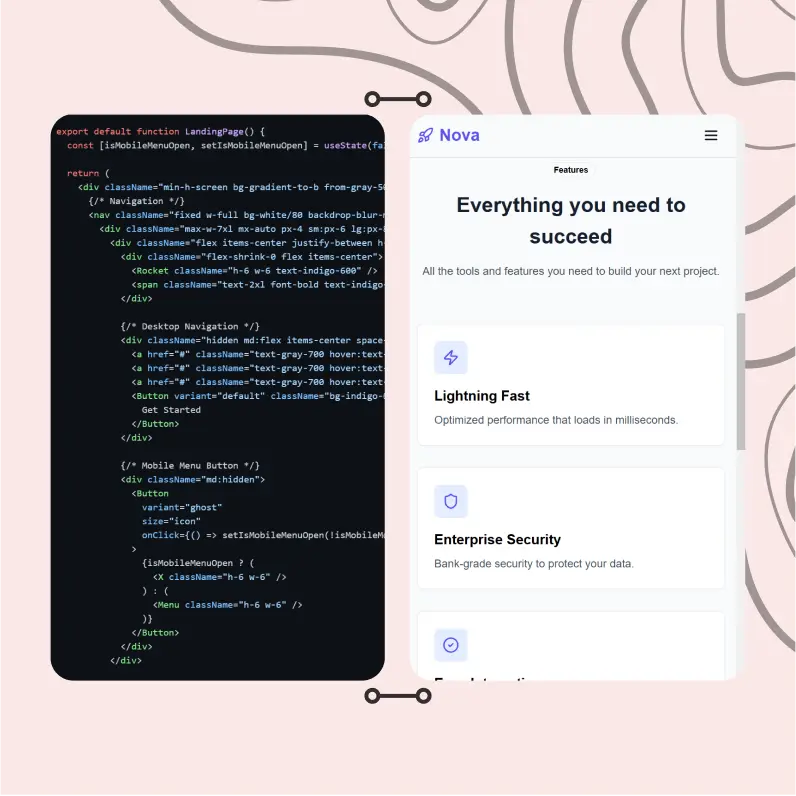
Powerful Tools for Everyday Excellence
Streamline your workflow with our collection of specialized AI tools designed to solve common challenges and boost your productivity
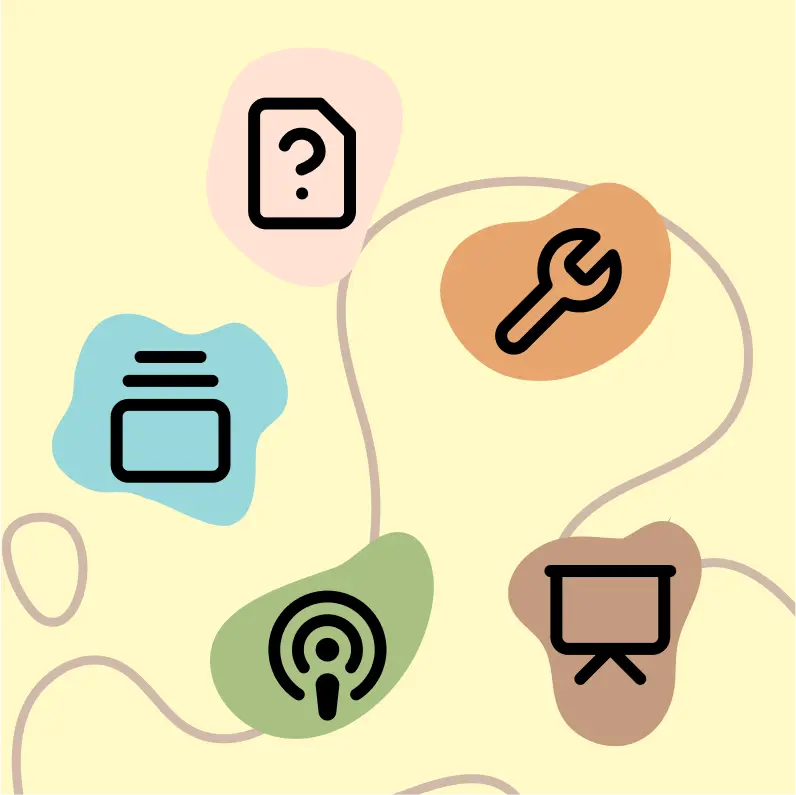
Live Mode for Real Time Conversations
Speak naturally, share your screen and chat in realtime with AI
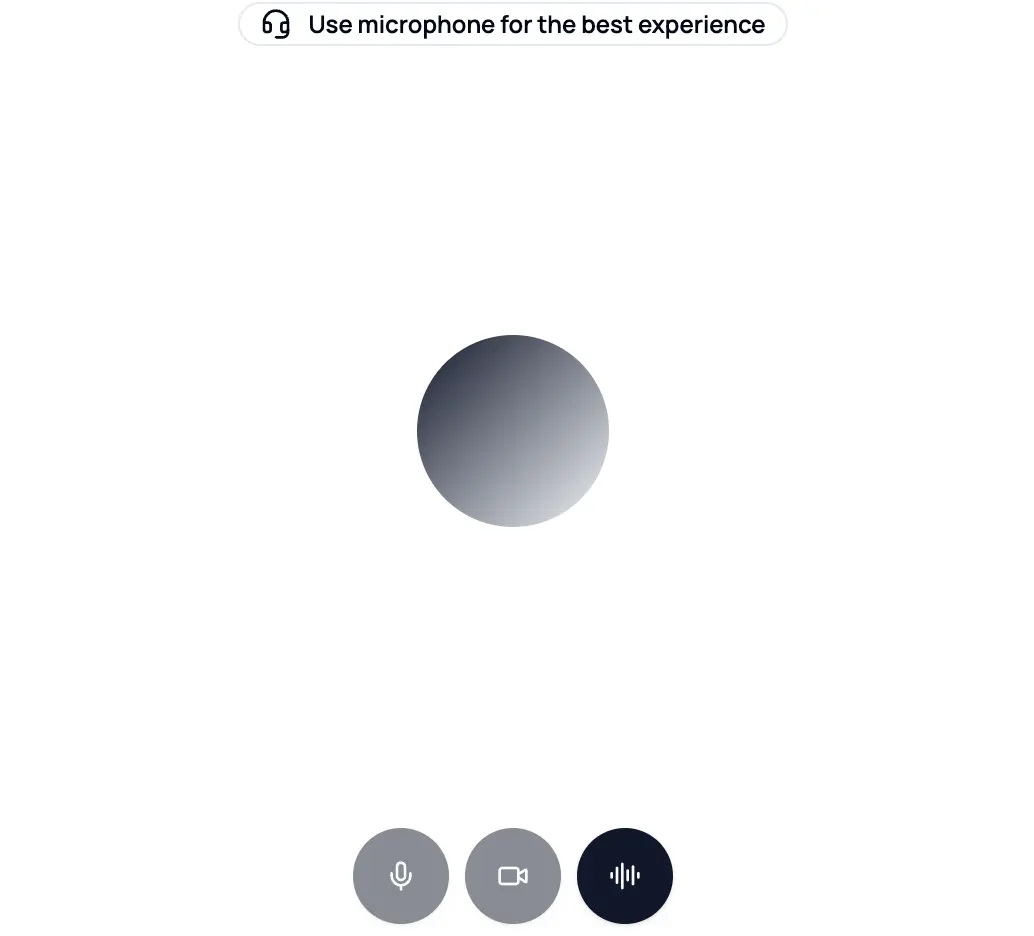
AI in your pocket
Experience the full power of Zemith AI platform wherever you go. Chat with AI, generate content, and boost your productivity from your mobile device.

Deeply Integrated with Top AI Models
Beyond basic AI chat - deeply integrated tools and productivity-focused OS for maximum efficiency
Straightforward, affordable pricing
Save hours of work and research
Affordable plan for power users
Plus
- 10000 Credits Monthly
- Access to plus features
- Access to Plus Models
- Access to tools such as web search, canvas usage, deep research tool
- Access to Creative Features
- Access to Documents Library Features
- Upload up to 50 sources per library folder
- Access to Custom System Prompt
- Access to FocusOS up to 15 tabs
- Unlimited model usage for Gemini 2.5 Flash Lite
- Set Default Model
- Access to Max Mode
- Access to Document to Podcast
- Access to Document to Quiz Generator
- Access to on demand credits
- Access to latest features
Professional
- Everything in Plus, and:
- 21000 Credits Monthly
- Access to Pro Models
- Access to Pro Features
- Access to Video Generation
- Unlimited model usage for GPT 5 Mini
- Access to code interpreter agent
- Access to auto tools
- 10000 Credits Monthly
- Access to plus features
- Access to Plus Models
- Access to tools such as web search, canvas usage, deep research tool
- Access to Creative Features
- Access to Documents Library Features
- Upload up to 50 sources per library folder
- Access to Custom System Prompt
- Access to FocusOS up to 15 tabs
- Unlimited model usage for Gemini 2.5 Flash Lite
- Set Default Model
- Access to Max Mode
- Access to Document to Podcast
- Access to Document to Quiz Generator
- Access to on demand credits
- Access to latest features
- Everything in Plus, and:
- 21000 Credits Monthly
- Access to Pro Models
- Access to Pro Features
- Access to Video Generation
- Unlimited model usage for GPT 5 Mini
- Access to code interpreter agent
- Access to auto tools
What Our Users Say
Great Tool after 2 months usage
simplyzubair
I love the way multiple tools they integrated in one platform. So far it is going in right dorection adding more tools.
Best in Kind!
barefootmedicine
This is another game-change. have used software that kind of offers similar features, but the quality of the data I'm getting back and the sheer speed of the responses is outstanding. I use this app ...
simply awesome
MarianZ
I just tried it - didnt wanna stay with it, because there is so much like that out there. But it convinced me, because: - the discord-channel is very response and fast - the number of models are quite...
A Surprisingly Comprehensive and Engaging Experience
bruno.battocletti
Zemith is not just another app; it's a surprisingly comprehensive platform that feels like a toolbox filled with unexpected delights. From the moment you launch it, you're greeted with a clean and int...
Great for Document Analysis
yerch82
Just works. Simple to use and great for working with documents and make summaries. Money well spend in my opinion.
Great AI site with lots of features and accessible llm's
sumore
what I find most useful in this site is the organization of the features. it's better that all the other site I have so far and even better than chatgpt themselves.
Excellent Tool
AlphaLeaf
Zemith claims to be an all-in-one platform, and after using it, I can confirm that it lives up to that claim. It not only has all the necessary functions, but the UI is also well-designed and very eas...
A well-rounded platform with solid LLMs, extra functionality
SlothMachine
Hey team Zemith! First off: I don't often write these reviews. I should do better, especially with tools that really put their heart and soul into their platform.
This is the best tool I've ever used. Updates are made almost daily, and the feedback process is very fast.
reu0691
This is the best AI tool I've used so far. Updates are made almost daily, and the feedback process is incredibly fast. Just looking at the changelogs, you can see how consistently the developers have ...
